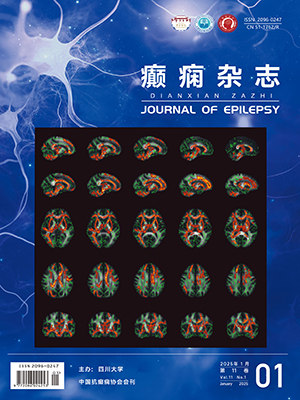| 1. |
Krumholz A, Wiebe S, Gronseth G, et al. Practice parameter: evaluating an apparent unprovoked first seizure in adults (an evidence-based review): report of the Quality Standards Subcommittee of the American Academy of Neurology and the American Epilepsy Society. Neurology, 2007, 69 (21): 1996-2007.
|
| 2. |
Falco-Walter J. Epilepsy—definition, classification, pathophysiology, and epidemiology. Seminars in Neurology, 2020, 40 (06): 617-623.
|
| 3. |
Hauser WA, Anderson VE, Loewenson RB, et al. Seizure recurrence after a first unprovoked seizure. N Engl J Med, 1982, 307 (9): 522-8.
|
| 4. |
Shinnar S, Berg AT, Moshe SL, et al. The risk of seizure recurrence after a first unprovoked afebrile seizure in childhood an extended follow-up. Pediatrics, 1996, 98 (2 Pt 1): 216-25.
|
| 5. |
Sansevere AJ, Avalone J, Strauss LD, et al. Diagnostic and therapeutic management of a first unprovoked seizure in children and adolescents with a focus on the revised diagnostic criteria for epilepsy. Journal of Child Neurology, 2017, 32 (8): 774-788.
|
| 6. |
Fisher RS, van Emde Boas W, Blume W, et al. Epileptic seizures and epilepsy definitions proposed by the International League Against Epilepsy (ILAE) and the International Bureau for Epilepsy (IBE). Epilepsia, 2005, 46 (4): 470-2.
|
| 7. |
Fisher RS, Acevedo C, Arzimanoglou A, et al. ILAE official report: a practical clinical definition of epilepsy. Epilepsia, 2014, 55 (4): 475-482.
|
| 8. |
Hirtz D, Ashwal S, Berg A, et al. Practice parameter: evaluating a first nonfebrile seizure in children: report of the quality standards subcommittee of the American Academy of Neurology, The Child Neurology Society, and The American Epilepsy Society. Neurology, 2000, 55 (5): 616-23.
|
| 9. |
Marson A, Jacoby A, Johnson A, et al. Immediate versus deferred antiepileptic drug treatment for early epilepsy and single seizures: a randomised controlled trial. The Lancet, 2005, 365 (9476): 2007-2013.
|
| 10. |
Shinnar S, Berg AT, O'Dell C, et al. Predictors of multiple seizures in a cohort of children prospectively followed from the time of their first unprovoked seizure. Ann Neurol, 2000, 48 (2): 140-7.
|
| 11. |
Krumholz A, Wiebe S, Gronseth GS, et al. Evidence-based guideline_ Management of an unprovoked first seizure in adults. Report of the Guideline Development Subcommittee of the American Academy of Neurology and the American Epilepsy Society. Neurology, 2015, 84 (16): 1705-13.
|
| 12. |
Sogawa Y, Masur D, O’Dell C, et al. Cognitive outcomes in children who present with a first unprovoked seizure. Epilepsia, 2010, 51 (12): 2432-2439.
|
| 13. |
Jason EÅ, Tomson T, Carlsson S, et al. Neurodevelopmental comorbidities and seizure control 24 months after a first unprovoked seizure in children. Epilepsy Research, 2018, 143: 33-40.
|
| 14. |
Sillanpää M, S. S. Long-term mortality in childhood-onset epilepsy. N Engl J Med, 2010, 363 (26): 2522-9.
|
| 15. |
Llauradó A, Santamarina E, Fonseca E, et al. How soon should urgent EEG be performed following a first epileptic seizure?. Epilepsy & Behavior, 2020, 111: 107315.
|
| 16. |
Perucca P, Smith G, Santana-Gomez C, et al. Electrophysiological biomarkers of epileptogenicity after traumatic brain injury. Neurobiol Dis, 2019, 123: 69-74.
|
| 17. |
Chen Z, Maturana MI, Burkitt AN, et al. High-Frequency Oscillations in Epilepsy: What Have We Learned and What Needs to be Addressed. Neurology, 2021, 96 (9): 439-448.
|
| 18. |
Ji Y, Zhang J, Lu H, et al. Correlation between scalp high-frequency oscillations and prognosis in patients with benign epilepsy of childhood with centrotemporal spikes. Epilepsia, 2023, 64 (3): 667-677.
|
| 19. |
Drenthen GS, Jansen JFA, Gommer E, et al. Predictive value of functional MRI and EEG in epilepsy diagnosis after a first seizure. Epilepsy & Behavior, 2021, 115: 107651.
|




